Resources
Ozonaction Topic: Refrigeration and air conditioning
Showing 61 - 80 of 108
108 results found

The interaction and linkages of the Kigali Amendment with other existing policy measures is described in this fact sheet

A look at the considerations and actions that Parties must make to come up with an optimal HFC phase-down strategy.

A quick run-through of the different stakeholders that each Party must engage vis-à-vis the Kigali Amendment to ensure its successful and efficient implementation.

This fact sheet provides a summary of what Parties need to do when introducing new national legislation and setting up appropriate administrative procedures with regard to the implementation of the Kigali Amendment.

This fact sheet discusses some of the technical issues related to the operation of air-conditioning systems at high / extremely high ambient temperature

This fact sheet shows the four country groupings under the Kigali Amendment and provides a summary of the timetables and explains how to calculate the HFC baseline.

The benefits and advantages of quick action to avoid costs and achieve target environmental results are explained in this fact sheet.

This fact sheet gives guidance on the impact of using flammable HFC alternatives.

An overview of lower GWP alternatives and how these are being introduced into the different market sectors and sub-sectors.

An overview of the different sectors and markets where fluorocarbon chemicals and blends are used.

An introduction and general overview of the Kigali Amendment and the changes that will come with regard to the phase-down of HFCs.

This fact sheet shows the importance of understanding how ‘tonnes CO2 equivalent’ is calculated and gives the GWP values for substances controlled under the Kigali Amendment.

This fact sheet provides a list of the definition of terms and acronyms used in the Kigali Fact Sheet series as well as links to other useful information.

UN Environment and ASHRAE have partnered on a web-based course entitled “Refrigerants Literacy.” This course is 4.5 hours of instruction covering the basics of refrigerants used in air conditioning and refrigeration applications.

This fact sheet summarises and highlights the main elements of the Amendment of particular interest to countries operating under Article 5 of the Protocol (Article 5 Parties).

In 2016, the Montreal Protocol was amended to phase-down the production and consumption of hydrofluorocarbons (HFCs) which are commonly used alternatives to ozone depleting substances.

An overview of the basic tools used by RAC technicians in the servicing sector.

Under the Montreal Protocol on Substances that Deplete the Ozone Layer, Article 7 of the Protocol requires all Parties, both developing countries (also called Article 5 countries) and developed countries, to provide statistical data on an annual basis, on various issued related to trade and production of ozone-depleting substances (ODS),… read more

The RAC sector represents a major share of energy use in most developing countries as RAC appl i cat ions consume large amounts of electricity for cooling requirements, resulting in a rapid increase in energy consumption in the commercial and residential sectors of many countries.

United Nations Environment Programme (UNEP) OzonAction Branch, as well as other United Nations (UN) agencies operating under the Montreal Protocol on Substances that Deplete the Ozone Layer, offered over the last two decades exhaustive training programmes for the servicing technicians on the refrigeration good practices including emissions… read more
Showing 61 - 80 of 108





